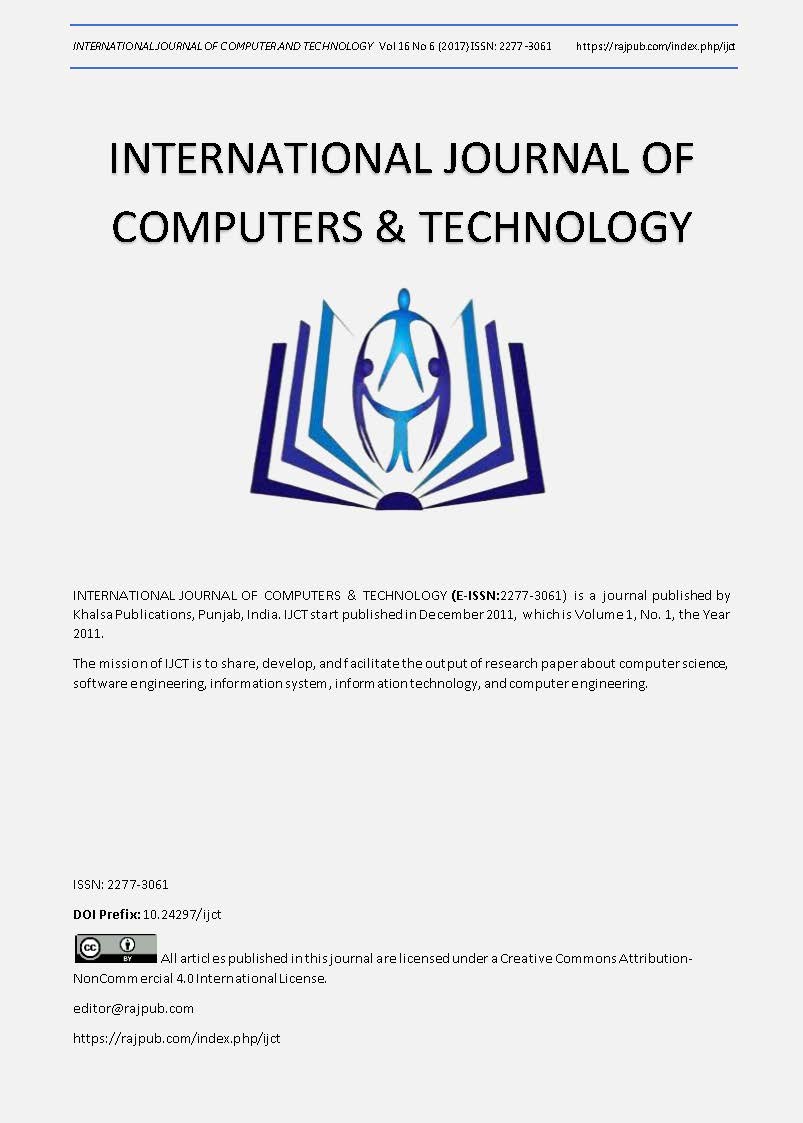MOBILE SMART EMERGENCY RESPONSE SYSTEM FOR JEDDAH CITY
DOI:
https://doi.org/10.24297/ijct.v16i6.6323Keywords:
Internet of things (IoT), Jeddah smart emergency response system (JSERS), smart city, digital city, e-governmentAbstract
Responding to disasters and crises is a crucial role for the government to ensure the public safety of society. Responding lies in the counter of crimes of civil or disorders, providing the urgent medical care to injured or sick people, and providing relief of natural and manmade disasters. Despite ongoing attempts to improve emergency response systems in Jeddah, Saudi Arabia, it still suffers from vulnerability. With the current development of the technology and internet of things (IoT), it became necessary to apply these techniques for improving emergency response systems in Jeddah. In this paper, we present Jeddah Smart Emergency Response System (JSERS) as a solution to improve the emergency response system in Jeddah using smart city technologiesز First, we discussed the problems related to the response to accidents and disasters and their history in the Kingdom of Saudi Arabia, especially Jeddah. Consequently, we described the proposed solution, followed by the architecture of the system. Following by the opportunities and the challenges of system implementation are discussed. Finally, a list of suggestions that supports this system implementation and deployment is reported.
Downloads
References
2. Ghaffar, U. B., & Ahmed, S. M. (2015). A review of road traffic accidents in Saudi Arabia: the neglected epidemic. Indian journal of forensic and community medicine, 2(4), 242-242.â€
3. 2015 Mina stampede. (2017, May 16). Retrieved May 20, 2017, from https://en.wikipedia.org/wiki/2015_Mina_stampede.
4. List of terrorist incidents in January 2017. (2017, May 18). Retrieved May 20, 2017, from https://en.wikipedia.org/wiki/List_of_terrorist_incidents_in_January_2017
5. Saudi arabia: 52 thousand fire incidents with 6 fires per hour. (n.d.). ArabianBusinessArabic.com . Retrieved April 2, 2017, from http://arabic.arabianbusiness.com
6. Abosuliman, S. S., Kumar, A., & Alam, F. (2013). Disaster preparedness and management in Saudi Arabia: an empirical investigation. International Journal of Social, Human Science and Engineering, 7(12), 295-299.â€
7. Youssef, A. M., Sefry, S. A., Pradhan, B., & Alfadail, E. A. (2016). Analysis on causes of flash flood in Jeddah city (Kingdom of Saudi Arabia) of 2009 and 2011 using multi-sensor remote sensing data and GIS. Geomatics, Natural Hazards and Risk, 7(3), 1018-1042.â€
8. Alamri, Y. A. (2010). Emergency management in Saudi Arabia: Past, present and future. Un. Of Christchurch report, New Zealand, 21.â€
9. Jadi, A. (2016). Improving the Emergency Services for Accident Care in Saudi Arabia. International Journal of Advanced Computer Science and Applications, 7(9). doi:10.14569/ijacsa.2016.070915 â€
10. Pararas-Carayannis, G. CRITICAL ASSESSMENT OF DISASTER VULNERABILITIES IN THE KINGDOM OF SAUDI ARABIA-STRATEGIES FOR MITIGATING IMPACTS AND MANAGING FUTURE CRISES.â€
11. Yao, H., Liu, F., Zhang, L., & Liang, D. (2013). Emergency Management System of Saudi Arabia. Procedia Engineering, 52, 676-680. doi:10.1016/j.proeng.2013.02.205
12. Abdulaal, M. (2014). Optimisation of Lagrangian Flash Flood Microsensors Dropped by Unmanned Aerial Vehicle (Doctoral dissertation).â€
13. Abdulaal, M., Algarni, M., Shamim, A., & Claudel, C. (2014). Unmanned Aerial Vehicle based flash flood monitoring using Lagrangian trackers. In International Workshop on Robotic Sensor Networks.â€Baheti, R., & Gill, H. (2011). Cyber-physical systems. The impact of control technology, 12, 161-166.â€
14. Baheti, R., & Gill, H. (2011). Cyber-physical systems. The impact of control technology, 12, 161-166.â€
15. rolta. Smart & safe cities: Concept to reality. 2015.
16. Zander, J., Mosterman, P. J., Padir, T., Wan, Y., & Fu, S. (2015). Cyber-physical Systems can Make Emergency Response Smart. Procedia Engineering, 107, 312-318.â€
17. High Performance Computing Center. (2017, 8 27). Retrieved from King Abdulaziz University: http://hpc.kau.edu.sa/Default.aspx?Site_ID=611997&Lng=EN
18. Object-Based Media Group, MIT Media Lab. (n.d.). A Platform For Mobile Content Sharing. Retrieved May 20, 2017, from http://shair.media.mit.edu/
19. Smart Emergency Response System. (n.d.). Retrieved May 20, 2017, from https://www.mathworks.com/campaigns/products/offer/smart-emergency-response-system.html.
20. Foreword. (n.d.). Retrieved May 20, 2017, from http://vision2030.gov.sa/en/foreword









